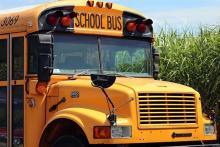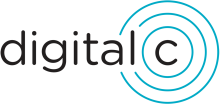
School districts in both urban and rural communities are taking steps to help students stay competitive as technology becomes an integral part of learning. As they develop laptop programs, school districts must also contend with the problem of unaffordable, unreliable, and slow Internet access at students’ homes. In Columbus, Mississippi, the local municipal electric utility is collaborating with the school district to bring Internet access to students after school hours.
One Missing Ingredient
Schools in Columbus, Mississippi, have been implementing technology as a standard learning component for the past several years, and have established a program to provide tablets and laptops for each high school student. As they continue to expand the program, they face a problem that other communities face when high-quality connectivity isn't widespread or affordable: many school kids in Columbus still don't have Internet access at home. In Columbus, affordability is the chief barrier. Without connectivity, one-to-one device programs can never achieve maximum success.
In October 2018, the Columbus Municipal School District (CMSD) approached Columbus Light and Water (CLW) and asked if the municipal utility could find a way to use its fiber infrastructure to extend the school’s Internet access beyond school facilities. CMSD wanted to allow students to connect past school hours. CLW general manager Todd Gale and CLW examined the possibilities and determined the project to be feasible.
 CLW will use its existing fiber optic infrastructure and add about two more miles of fiber to reach specific areas of the school district. When examining the addresses of students on a map, they discovered that many students live within close proximity to housing authority and public park locations. The utility has been able to identify five specific locations that will have the most impact as hotspots. Each hotspot should provide up to a one and one-half mile radius of fixed wireless access.
CLW will use its existing fiber optic infrastructure and add about two more miles of fiber to reach specific areas of the school district. When examining the addresses of students on a map, they discovered that many students live within close proximity to housing authority and public park locations. The utility has been able to identify five specific locations that will have the most impact as hotspots. Each hotspot should provide up to a one and one-half mile radius of fixed wireless access.
"We chose five locations, and those five in particular, because that's the number it would take to give students adequate coverage given where they live," Gale said [in a recent Columbus Dispatch article]. "We wanted to make sure we were giving the maximum amount of access possible."
Students who live very close to the hotspots may be able to access the Internet from home, but most will need to go to the facilities where hotspots are located. CLW will provide the fiber, the equipment, and the firewalls to the school. CMSD will control the content as it does within computer labs on school premises. The school district will also decide hours of operation. Students will use the same password they use at school, will still have to abide by the same use restrictions, and content will be resticted as it is at school facilities. “We’re just giving them a conduit to provide access,” describes Gale.
 Planning, design, and agreements are still being hammered out, but it’s likely that CLW will be the Internet access provider for the project. CLW will charge CMSD the cost to establish the hotspots and allow the district to take up to five years to pay off the total in monthly installments. Gale roughly estimates the payments will come to approximately $2,000 per month, or around $120,000 in total.
Planning, design, and agreements are still being hammered out, but it’s likely that CLW will be the Internet access provider for the project. CLW will charge CMSD the cost to establish the hotspots and allow the district to take up to five years to pay off the total in monthly installments. Gale roughly estimates the payments will come to approximately $2,000 per month, or around $120,000 in total.
Once CMSD pays off the project, payments to CLW will end. “This is a community effort,” says Gale. CLW’s status as a municipal utility, he says, is to provide services such as the hotspots for students.
Making the Most of Their Assets
The utility has used fiber infrastructure for around 15 years for electric operations and has considered developing a municipal broadband network in order to bring fast, affordable, reliable high-quality Internet access to the entire community.
We reported in April 2019 about efforts to introduce legislation that would have expressly allowed the city to bond for financing to deploy fiber optic infrastructure throughout the community. After special interest lobbyists from Comcast and other national Internet access companies interacted with Senate committee leadership, the bill never advanced, ending the city’s plans for the foreseeable future.
Even though the city of around 24,000 people may not be able to obtain Internet access from their municipal utility at this time, public school students should soon be able to benefit. Approximately 3,500 students attend CMSD schools.
CMSD Superintendent Dr. Cherie Labat told the Dispatch:
"You don't think about the Internet as something that some people don't have, especially in this age," Labat said. "But we're in an area where students are often underserved. Providing them with Internet will give them the capacity to exceed above what they may have been able to otherwise."
Image by S. Hermann & F. Richter from Pixabay







